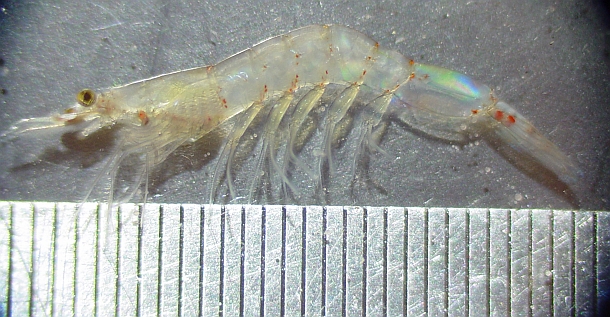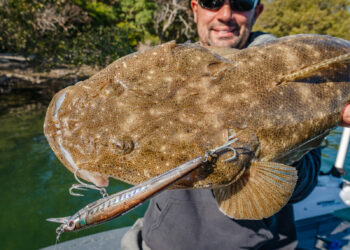
JELLY prawns are one of the critical building blocks at the lower end of the foodchain in our tropical and sub-tropical estuaries. They are also a favourite food item for many species of iconic tropical sportfish such as barramundi, threadfin salmon and tarpon to name but a few. But what exactly is a jelly prawn?
Contrary to the belief of some fishos, jelly prawns are not juveniles of larger prawn species, they are instead a particular type of small krill-like shrimp from the family Sergestidae that don’t grow any larger than 4cm. Despite their small size, members of this group are considered an important food source for people throughout south-east Asia, where they are captured using fine mesh nets and used for the manufacture of shrimp paste. Indeed, there are records stretching back nearly 2000 years of Chinese capturing “Fun” (small shrimps) for food.
There are several species within the family, including deep water genera (Sergestes and Sergia) that occur worldwide down to around 1800 metres in depth, but most fishos would be more familiar with the shallow water species of Acetes and Sicyonella found over mud flats and in estuaries throughout the tropical and subtropical Indo Pacific region.
All jelly prawns can be distinguished from juveniles of the larger penaeid prawns by the fact that penaeids have a very prominent serrated (and sharp!) rostrum extending out between the eye stalks. In contrast, the rostrum of jelly prawns is either absent, or very small and does not extend past the eyestalks. Jelly prawns also have a number of small red spots near the tail, and relatively long, slender krill-like swimming legs.
In Australia, the species of jelly prawn found in estuaries and inshore waters throughout the northern half of the country is Acetes sibogae australis. This species grows to a maximum size of around 35mm and has been recorded throughout the NT and down the east coast south to around Sydney, and in WA down the west coast to at least the Swan River in Perth.
Like other shallow water species of jelly prawns, A. sibogae australis can be extremely common at certain times of the year, swimming in large swarms near the surface over shallow mud flats or muddy bottom substrates. In estuaries these swarms tend to concentrate in the shade near river banks or other structures like rocks and jetties in both saltwater and brackish water up to the limit of tidal influence.
Analysis of the gut contents of jelly prawns have found they feed mainly on small zooplankton as well as phytoplankton (algae) and they possibly derive nutrition even from microbes attached to sediments. These virtually unlimited food sources help explain the massive abundance of jelly prawns when environmental conditions suit them. The massive rate of predation of jelly prawns by almost every type of predatory fish also suggests their life history is based around what biologists call a “R – selection strategy”, which is thought to be an adaptation to living in unstable environments. R-selected species tend to be small, produce many offspring, mature early and have a short life expectancy. They also are species that tend to have very high natural mortality rates and large fluctuations in their population size.
Like most shrimp, jelly prawns have a rapid life cycle growing from eggs to adults and spawn again within their first year. Indeed, a study in Townsville found there were at least three cohorts of jelly prawns per year in any given site, suggesting that they can complete their life cycle within four months, and may only live for around six months. “Tagging” of jelly prawns by dunking them in a dye found that individual prawns in areas without much current flow moved very little (less than 20 metres) in any given day. Peak densities of jelly prawns occurred a week or two after spawning events, with numbers of prawns gradually reducing in the following weeks and months as predators took their toll. Then, around four months later, another peak in jelly prawn numbers was observed as a new cohort of smaller prawns emerged from the plankton.
These large fluctuations in jelly prawn numbers are ecologically significant and can be important for anglers fishing our tropical estuaries for the following reasons. When jelly prawns are abundant, many sportfish species will switch prey and feed on them to the virtual exclusion of anything else. This can make fishing difficult, and frustrating at times, unless you can accurately replicate the small size and appearance of the jelly prawns with your lure or ba





















